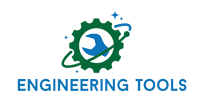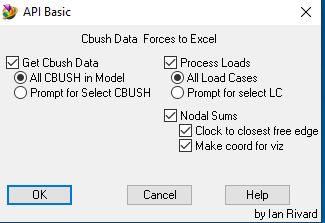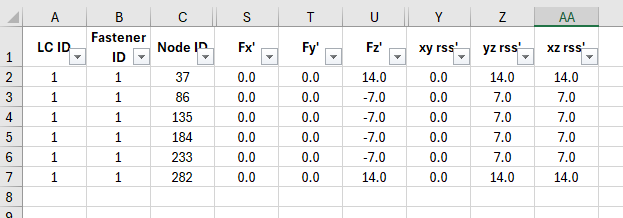|
Cbush Forces to Excel Script Author: Ian Rivard
Description: This script prompts the user for cbushes and output to consider then prints to excel tons of useful CBUSH data and CBUSH forces that can be easily used to directly calculate margins for the joints. For models with more than simply single shear joints, a sum by node option is now available, this will produce the same results as freebody post processing.
Use Instructions: Run the tool, select the data to consider and it will open excel with the results.
Requirements: A model with at cbush elements.
Results:
Example: Consider the following example: A simple plate stackup with one idealized fastener through. The plate is rotated off of global axes, and an axial load is applied. In order to properly get the results traditionally a local coordinate system would have to be created (for example in this case it is provided as csy 3) and a freebody transformed into that coordinate system. This would then provide shear and axial results for the joint. Using cbush forces to excel the desired results can be obtained directly. This can be useful for enveloping many cases and many fasteners (especially when they have different orientations).
Example bulk deck in the above example is here.
Additional Uses: This script also can query connected elements average E, and average t. In this way users can easily calculate new cbush stiffness values that are a function of not only the fastener properties, but also the joint properties also. Typically standard methods (Huth, or CR3710) require inputs about the joint in addition to simply the fastener. The script also has the capability to identify the closest free edge. The modeling assumptions is shell-cbush-shell. This allows for easy clocking of forces to extract the proper shear values for parallel and normal to the free edge for easy subsequent processing. Notes: Currently, the script is in beta, but is included in the standard FEMAP API suite from engineeringtools.org. To our users: We appreciate feedback on our tools and encourage you to modify them to your specific needs. If you make an improvement you feel would be valuable to others, please submit it through our contribution page.
|
||




